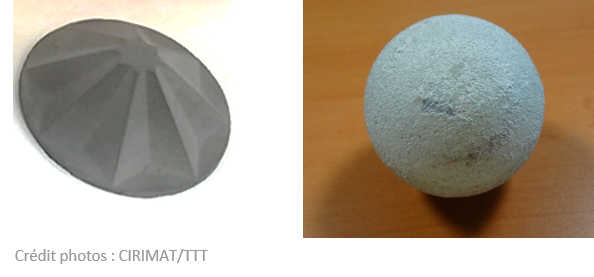Sustainable & digital engineering
Advanced materials
Process for producing complex parts using SPS sintering

Content created on
Sintering manufacturing methods for complex-shaped parts are not fully satisfactory: loss of material, lengthy process, imperfect material performance, etc. SPS (Spark Plasma Sintering) is a rapid densification technique used to produce high-performance parts.
Combining SPS with a process for producing complex shapes is now possible.
COMPETITIVE ADVANTAGES
- Complex geometry
- Homogeneity of density and microstructure
- "Near net shape"
- Reduced material waste & Manufacturing costs
- Simplification & Manufacturing speed
- Parts with high-performance mechanical properties
APPLICATIONS
- Turbocharger turbine
- Turbine blade
- Piston pin
- Valve
- Bearing ball
- Watch case
INTELLECTUAL PROPERTY
- Patent
DEVELOPMENT STAGE
Laboratory validation of the technology
LABORATORY

CIRIMAT
Équipe Nanocomposites et Nanotubes de Carbone
Description
- Process for manufacturing complex parts to near net shape:
- Use of a sacrificial material (particularly of a different nature and less expensive)
- Materialisation of moving separation interfaces
- Evolution of the interface during densification: accompanying the shaping of the part towards its final dimensions
- One-step manufacturing process
- Manufacture of several parts in a single die
- Rapid production of high-performance parts

Technical specifications
- End part material: Unrestricted choice (metals and alloys, ceramics, etc.)
- Interface material:
- Non-sinterable under processing conditions
- Non-reactive with respect to the materials to be sintered
- Sacrificial material:
- Requires sintering parameters close to those of the final material
- Non-limiting shaping method (conventional sintering, additive manufacturing, SPS, etc.)



